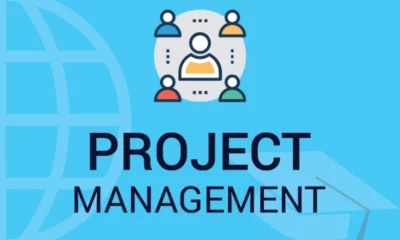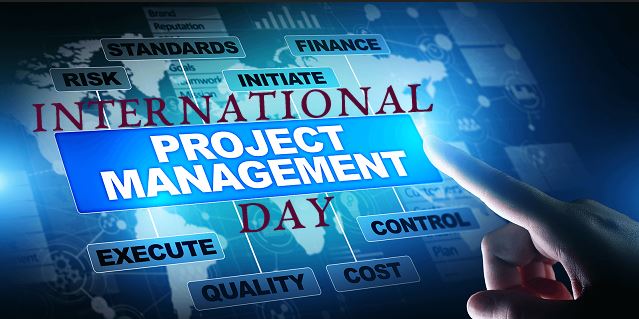Business
Brandon Sarna Narrates Retail Renovation: Strategies for Successful Project Management

The retail industry is constantly evolving. To keep up, renovations are needed. Project management is critical for successful renovations in the retail sector. Here are strategies for effective project management.
Renovating a retail space is serious. Brandon Sarna says careful planning and execution are essential. A renovation can improve the store’s look and the customer experience – driving sales.
Effective communication is a crucial strategy for successful project management. Everyone involved in the project should have regular meetings, progress updates, and open communication channels.
Thorough planning is also essential. Timelines, goals and objectives, and potential risks should all be considered. This helps project managers prepare for obstacles.
Flexibility is crucial. Retail environments are constantly changing, so project managers must be able to adjust plans while meeting deadlines and staying within budget.
Good leadership skills are critical, too. Project managers need solid organizational abilities, problem-solving skills, and the ability to motivate their teams. Leaders should provide clear direction and support for tasks to be completed efficiently and to a high standard.
Understanding the Importance of Retail Renovation
Retail renovation is vital for any retail project’s success. It involves redesigning the physical space, boosting customer experience, and improving overall efficiency. Businesses must recognize the value of retail renovation to remain competitive in today’s quickly changing market.
Through retail renovation, companies can make their stores inviting and fresh. A well-planned retail space not only increases foot traffic but also motivates customers to linger around and purchase. With strategic layout changes, eye-catching displays, and improved lighting, sellers can display their items and attract customers to buy.
Moreover, retail renovation allows businesses to keep up with shifting consumer demands and trends. As technology advances, retailers need to stay ahead. Through renovations, retailers can bring in modern technologies, such as interactive displays or self-checkout systems. By giving convenient shopping experiences that align with current expectations, retailers can earn and maintain a faithful customer base.
In addition to improving the customer experience, retail renovation also boosts operational efficiency. By optimizing store layouts and using efficient workflows, businesses can streamline operations and save costs. For instance, incorporating automated inventory management systems or optimizing storage spaces can help retailers cut down on stockouts and maximize inventory turnover.
Brandon Sarna from Construction Management says successful retail renovations require meticulous planning, effective stakeholder communication, proper budgeting, and timely execution. Project managers must cooperate closely with architects, contractors, designers, and other relevant parties throughout the renovation process.
Preparing for a Retail Renovation Project
Assess the project’s scale and make a detailed plan. This means setting objectives, fixing periods, and calculating expenses. Then, recruit a qualified team of architects, contractors, and designers. Good communication and cooperation are essential.
Secure all needed permits and approvals from relevant bodies before starting any building. Secure financing and create a budget for using resources wisely during the renovation.
Remember, each store has its peculiar needs. Adapt the plan to deal with them.
Assembling the Project Team
Assembling an effective project team is vital for retail renovation success. To get the perfect couple, use this 3-step guide:
- Identify roles & responsibilities: Define the functions needed and what tasks to complete. This includes construction manager, architect, interior designer, and procurement specialist.
- Seek diverse expertise: Look for professionals with experience in retail construction and problem-solving skills. Different perspectives will help with innovative ideas and overcoming challenges.
- Foster clear communication: Open lines of communication and regular meetings. Utilize digital tools like project management software. Include stakeholders early for their input and support.
Remember, it’s not just about knowledgeable individuals but creating a cohesive team. Look for candidates with interpersonal skills to promote effective teamwork.
These strategies will help your team unite diverse talents with transparent communication for maximum success.
Developing a Comprehensive Project Plan
Define the project scope & objectives to provide direction & ensure that all stakeholders agree. Create a timeline with milestones & deadlines – this helps to track progress & locate any potential delays. Additionally, establish a budget that includes resources & costs. Monitor expenses to stay within budget.
Communicate with the team & stakeholders regularly. Set up meetings & provide updates. With a thorough project plan, you increase the chances of successful results on time & within budget.
Project management requires a comprehensive project plan – without it, confusion, delays & even failure can occur. Take charge of your projects & invest time & effort into developing a solid plan. It’s worth it – a well-thought-out project plan sets the stage for success! Start today!
Executing the Retail Renovation Project
Make a retail revamp project successful with five steps!
- Plan it out: Define the scope of work, decide the budget, and set a timeline. This will guide the project and align all parties.
- Form a great team: Get skilled professionals like architects, designers, contractors, and vendors who know retail renovations. Working with experts helps keep communication smooth and results excellent.
- Check the site: Before starting construction, do comprehensive assessments. Check existing infrastructure, building codes and regulations, and structural issues that need attention.
- Use project management tools: Technology like software will track progress, set deadlines, and let team members talk. This makes workflows smoother and keeps parties responsible.
- Monitor progress: Monitor the revamp project and make necessary changes. This could be changing timelines or budgets due to unexpected issues or modifications.
Remember, a successful retail renovation project needs careful planning, good teamwork, precise site assessments, project management tools, and constant monitoring.
Ensuring a Smooth Store Transition
A successful retail renovation project requires a smooth store transition. To make this happen, project managers must follow a four-step guide.
- Planning: Start by creating a detailed plan for the timeline, budget, and scope of the renovation. This will help to spot potential issues and set goals.
- Communication: Good communication is essential to reduce disruption. Keep everyone informed, including store staff, contractors, and customers. Update them often and answer their questions quickly.
- Phased Approach: Keep the store running with a phased approach. Break the project into stages to minimize disruption to daily operations. This helps to get things done quickly and keep customers happy.
- Quality Control: Monitor the work and make sure it meets industry standards. Deal with any changes from the plan right away to maintain quality.
The plan should consider unique factors like foot traffic, existing infrastructure, and customer preferences. Here are some more ideas to ensure success:
- Get a project team with experience in retail renovations.
- Prepare for any obstacles in advance with backup plans.
- Train staff during the transition period.
- Seek feedback from employees and customers.
- Evaluate past experiences to learn for future store transitions.
By following these strategies, project managers will ensure the store transition is smooth, reducing disruption and increasing the success of the retail renovation project.
Post-Renovation Evaluation and Maintenance
Once a retail renovation project is finished, it’s essential to review it comprehensively and make a maintenance program. This guarantees the newly remodeled space remains in perfect shape and fulfills clients’ and customers’ desires.
- Inspection of Renovated Areas: The first move in post-renovation assessment is to examine all the spaces that have been refurbished. This includes looking for any problems or flaws that may have occurred during the building stage. It’s crucial to address these troubles to stop any more harm immediately.
- Testing All Systems: Another essential part of post-renovation evaluation is trying all the systems established during the renovation, such as electrical, plumbing, HVAC, and security. This confirms that everything is operating correctly and meets safety regulations.
- Gauging Customer Feedback: Gathering customer opinions can give priceless insights into how well the retail renovation has met their requirements. By monitoring customer feedback via surveys or direct conversations, you can identify any zones that need improvement or possible issues that may have been missed.
- Creating a Maintenance Plan: Ultimately, it’s critical to produce a maintenance plan for ongoing upkeep after the renovation. This includes regular inspections, maintenance tasks, and attending to any repairs or updates essential to keep the space in ideal condition.
Also, it’s notable to trace key performance indicators (KPIs) connected to customer gratification and sales after the renovation. This info can help evaluate the project’s triumph and spot any extra steps needed for progress.
An applicable true story highlights the importance of post-renovation evaluation and maintenance. For example, a renowned retail store accomplished a major renovation but fell short of executing a thorough review after. In a few months, several problems began appearing, including plumbing leaks, malfunctioning electrical systems, and unsatisfactory customer experiences. The lack of proper post-renovation evaluation and maintenance caused additional costs and decreased customer contentment. This story stresses the value of taking these steps seriously to guarantee a prosperous retail renovation project.
Project management strategies discussed in this article offer a great understanding of successful retail renovations.
Following these approaches lets project managers effectively oversee the entire process, ensuring timely completion and client satisfaction. Taking a proactive approach to communication and problem-solving helps with smooth project execution. Thinking about details like budgeting constraints and stakeholder expectations is essential for a successful outcome.
-

 Business3 weeks ago
Business3 weeks agoPrakash and Kamal Hinduja: Driving Social and Environmental Change
-
Education4 weeks ago
Fred DuVal: University Leadership as a Critical Resource for Climate Change Research and Life-Saving Solutions
-

 Health3 weeks ago
Health3 weeks agoThe Hinduja Brothers Commitment to Global Health: Empowering Communities Across Borders
-

 Cryptocurrency3 weeks ago
Cryptocurrency3 weeks agoDesigned For The Masses: How Akasha (AK1111) Is Unlocking Crypto For The Next Billion Users
-

 Cryptocurrency4 weeks ago
Cryptocurrency4 weeks agoNexaglobal & Future World Token (FWT): Could This Be the Next Big Crypto Investment of 2025?
-

 Sports4 weeks ago
Sports4 weeks agoWomen’s NCAA Tournament 2025 Sweet 16: Full Schedule, Fixtures, Teams, Bracket, and How to Watch March Madness Basketball Match Live
-

 Startup1 week ago
Startup1 week agoCost-Saving Strategies Every Small Business Owner Should Know to Boost Efficiency
-

 Startup3 weeks ago
Startup3 weeks agoMatthew Denegre on the Art of Deal Sourcing: Finding the Right Investment Opportunities






















